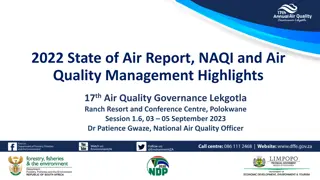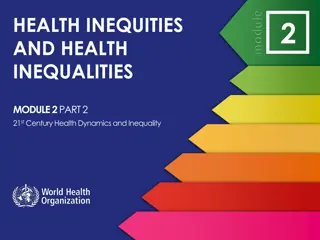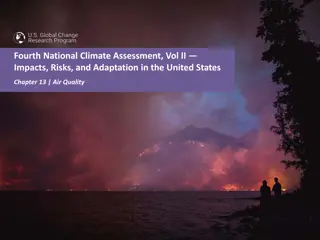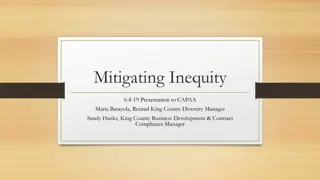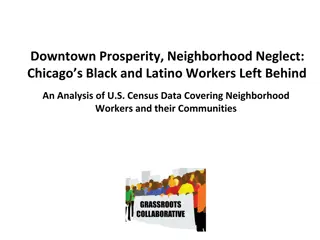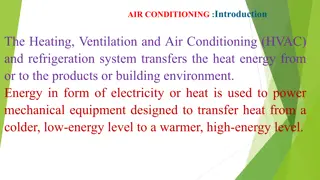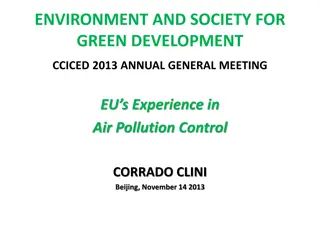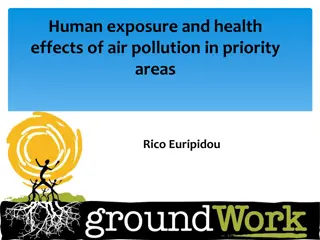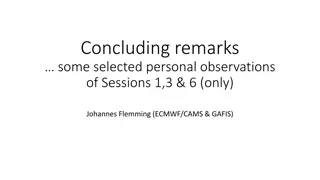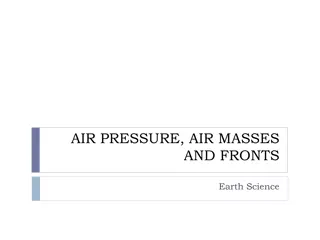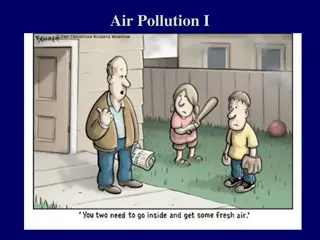Understanding Inequity in Air Quality: Implications for Climate and Human Health
This course delves into the chemical and physical processes governing atmospheric composition and their impact on climate, ecosystems, and human welfare. Students explore topics such as nitrogen, oxygen, carbon, and sulfur cycles, as well as the chemical forcing of climate change. The course highlights the importance of atmospheric chemistry in understanding air pollution, acid rain, and stratospheric ozone depletion. Through exploring the inequities in air quality, particularly experienced by non-white neighborhoods, students gain insights into the complexities of environmental justice and climate impacts.
Uploaded on Sep 22, 2024 | 0 Views
Download Presentation

Please find below an Image/Link to download the presentation.
The content on the website is provided AS IS for your information and personal use only. It may not be sold, licensed, or shared on other websites without obtaining consent from the author. Download presentation by click this link. If you encounter any issues during the download, it is possible that the publisher has removed the file from their server.
E N D
Presentation Transcript
ATM S 358: Fundamentals of Atmospheric Chemistry Lecture Topic: Inequity in air quality An introduction to the chemical and physical processes determining the composition of the atmosphere and implications for climate, ecosystems, and human welfare. Nitrogen, oxygen, carbon, sulfur cycles. Chemical forcing of climate change. Stratospheric ozone. Oxidizing power of the atmosphere. Air pollution. Acid rain. By the end of the quarter, students will have a basic knowledge of: The chemical composition of the atmosphere The sources and sinks of trace gases and aerosols in the atmosphere The importance of chemicals in the atmosphere for climate, human health and ecosystem health Air pollution, acid rain, and stratospheric ozone depletion
ATM S 358: Fundamentals of Atmospheric Chemistry Lecture Topic: Inequity in air quality Kerr, et al., PNAS (under review)
Learning objectives The magnitude of the inequity in air quality Non-white neighborhoods have worse AQ during the lockdown than white neighborhoods before lockdowns (even with a ~50% decrease in traffic!) How to approach the scientific literature The students have a term paper/presentation for the course where they need to cover a topic in atmospheric chemistry (e.g., aerosols and geoengineering, dust and snowball Earth, etc)
Why this paper? It covers topics the students will have recently learned about (NOx and air pollution) It s an example of something actual researchers are working on It s a nice example of scientists using a natural experiment It highlights some of the complexity in air quality response Non-white neighborhoods had the largest air quality improvement, but still saw worse AQ than white neighborhoods before the lockdown Kerr, et al., PNAS (under review)
Tasks for the students Each student will: 1) Read the paper (5 pages long) 2) Watch a short video from the author 3) Post 2 discussion questions the night before Those questions will form the basis for discussion/breakout groups Each group will be assigned 2 questions for ~15 min Groups will report back on one question We ll then discuss a couple of the figures in more detail Students will speak to one person about the topic after the class
Climate justice in atmospheric chemistry Big Idea: Air Pollution Climate Justice Issue: There are stark disparities in air pollution based on race, ethnicity, etc Civic Engagement: Students will discuss the topic with someone (roommate?) after the lecture




